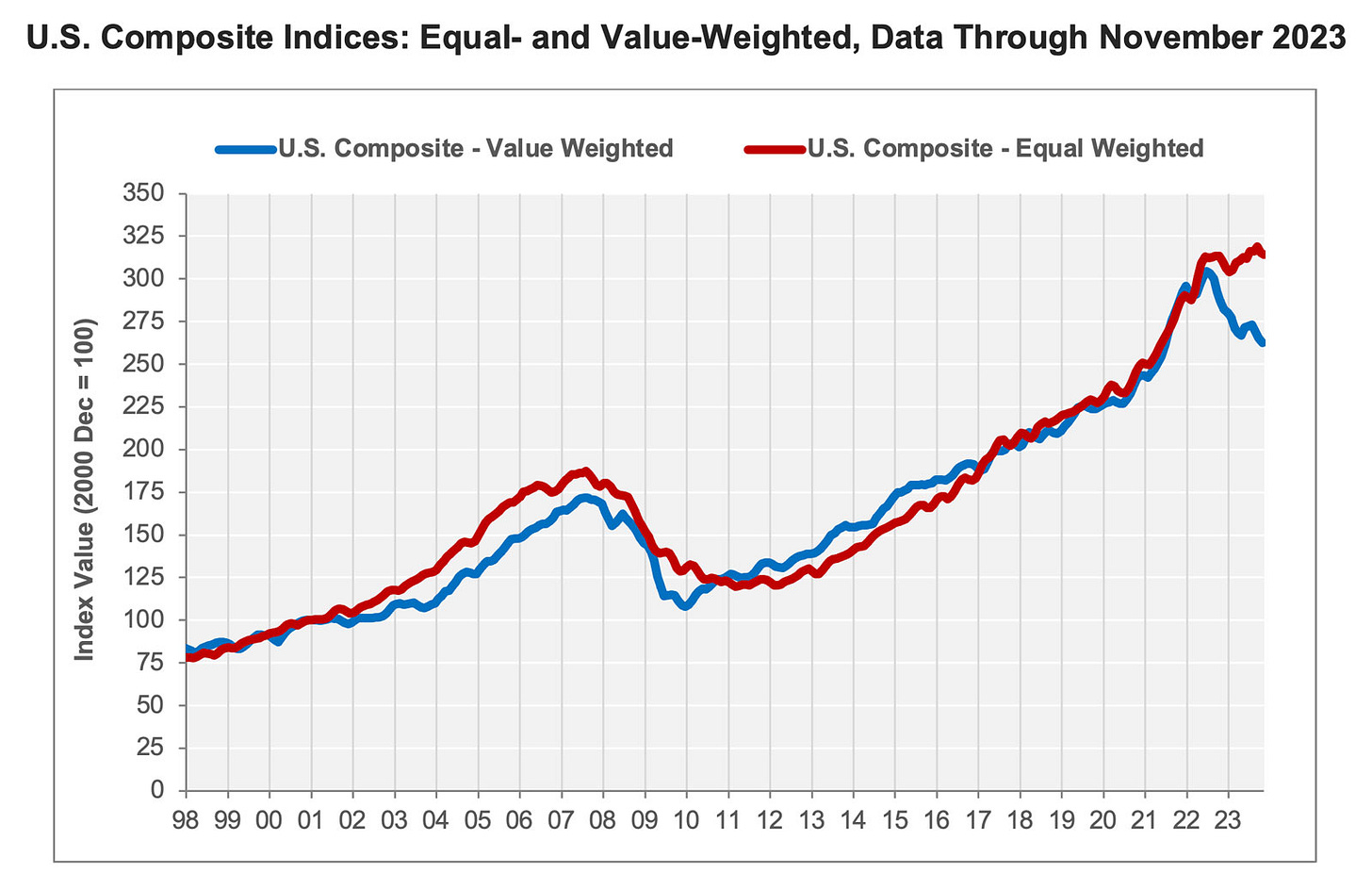CoStar Releases Bleak Analysis of the US Commercial Real Estate Market [Daily CRE Update 1/1/2023]
TL; DR: Commercial Real Estate Transactions Plummet, Excess Supply Drives Down Value.
In a sobering release, CoStar has unveiled its latest analysis of the U.S. commercial real estate market, painting a rather bleak picture for stakeholders. The report sheds light on the troubling signs and underlying factors that could spell a difficult period ahead.
Stakeholders are now left to wonder: how will these predictions shape strategies and decisions in an already complex market environment?
The U.S. commercial real estate market is experiencing a downturn, with sales prices dropping as deal numbers dwindle to levels comparable to the pandemic's early days, according to a recent analysis by CoStar Group.
Data from November, which is the latest currently available, highlights this trend in CoStar’s Commercial Repeat-Sale Indices. These indices monitor property values by tracking the resale of properties.
November's transaction count was alarmingly low, only slightly above the lowest point during the initial pandemic lockdowns. Chad Littell, national director of U.S. capital markets analytics for CoStar and author of the report, suggests that this slump might indicate that fourth-quarter sales could fall short of being the highest for the year.
Littell emphasized that not only has there been a significant decline in repeat sales but also a dramatic drop in total dollar volume changing hands. In November alone, there was a loss of $3.6 billion compared to October, with sales plummeting 38.6% to $5.7 billion—a severe decrease unseen since 2008 for this time of year.
In major cities where larger property transactions are more common, the value-weighted U.S. Composite Index fell for three consecutive months—down by 1.1% from October and 8.3% year over year as of November; it stands at 13.8% below its peak in July 2022.
Conversely, the equal-weighted U.S. Composite Index—which includes smaller deals prevalent in less populous markets—declined marginally by 0.3% from October but grew by 1.3% over a year ending in November; however, it still registered a decrease of 1.5% from its September high.
A Precipitous Fall
Typically, before COVID-19 struck, November might see a minor dip in total sales dollars compared to October before sharply rising again in December. The average decline during Novembers between 2017 and 2019 was just 4.4%, making this year's sharp drop particularly striking.
The larger hit was taken by substantial property transactions within major cities—a segment that saw a staggering fall of 61.9% over the year ending in November when contrasted with the previous period through November 2022; these investment-grade deals comprised about 46.2% of all transactions within that timeframe.
Over the past twelve months, conditions have worsened within the investment-grade segment as reported by CoStar: net absorption (the amount of space occupied minus space vacated) was nearly non-existent across office, industrial and retail sectors—an astonishing decline from just one year prior.
Furthermore, construction completion for new spaces is anticipated to reach approximately 878 million square feet by December's end—an increase of 8.5% from last year—with around 89%, or roughly 781 million square feet being classified as investment grade based on their size and quality attributes along with potential rent returns.
What does this mean for commercial real estate investors? (aka action items for investors and CRE professionals)
This report probably does not come as particularly surprising for anyone that’s attuned to the current state of the markets.
So, what should you take away from this report?
These action items might help you to get a better understanding for what this report means for you, whether you’re an investor, real estate professional, or simply an interested onlooker wondering how this might affect you down the line.
Increased Caution
Investors may need to exercise greater caution when making decisions. With the possibility of a downturn, thorough due diligence becomes even more critical to assess potential risks and returns. US distressed real estate recently hit its highest level in nearly a decade, close to $80 billion, as higher interest rates and low office demand reverberated through the property markets.
Many of the investors in those properties, particularly heavily leveraged investors, may have wished they adhered to financial orthodoxy a little better, aka, don’t put all of your eggs in one basket.
Strategic Portfolio Adjustments
There might be a need for strategic adjustments to investment portfolios. This could mean divesting from certain assets, seeking recession-resistant property types, or shifting focus to markets that still show growth potential.
While remote work seems like it is here to stay, many large firms are pushing hard for a return to the office. Despite this corporate pushback at the highest levels, you have some analysts, like the researchers at Capital Economics, not seeing a bounce back until 2040 at the earliest.
The Bottom Line
As we face the prospect of a challenging 2024, investors should also emphasize diversifying their holdings and maintaining liquidity to weather any storms on the horizon. Staying informed about regulatory changes and market shifts is also vital to ensure that you’re making informed decisions in an ever-changing landscape. Frankly, we’ve never seen anything like the current office collapse.
This is likely not just a temporary blip, but most likely a sea-change in how we work, live, and play. Keep in mind that downtown cores built around office workers are also going to go through trials and tribulations, and the financial analysis around office-to-residential conversions is not necessarily promising.
To make sure you don’t get left behind, or miss out on information that could positively influence your commercial real estate investment decisions, subscribe to the Unreal Assets newsletter.
Receive daily updates straight to your email each day, ensuring you have the timely information needed to navigate these turbulent times effectively. Stay ahead of the curve by joining a community of savvy investors who value actionable intelligence in the dynamic world of real estate.
Subscribe now and make sure you're equipped with knowledge that can help turn challenges into opportunities.




